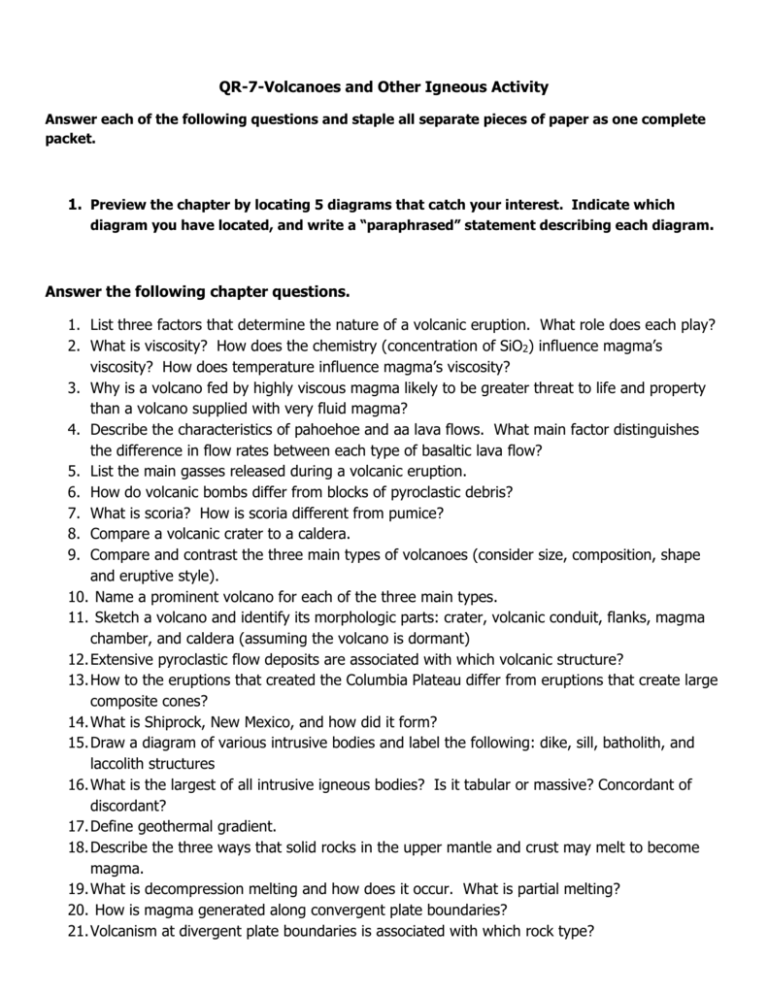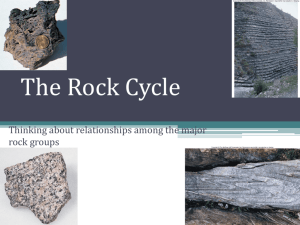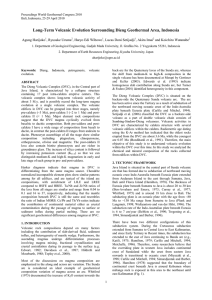QR-7-Volcanoes and Other Igneous Activity Answer each of the
advertisement

QR-7-Volcanoes and Other Igneous Activity Answer each of the following questions and staple all separate pieces of paper as one complete packet. 1. Preview the chapter by locating 5 diagrams that catch your interest. Indicate which diagram you have located, and write a “paraphrased” statement describing each diagram. Answer the following chapter questions. 1. List three factors that determine the nature of a volcanic eruption. What role does each play? 2. What is viscosity? How does the chemistry (concentration of SiO2) influence magma’s viscosity? How does temperature influence magma’s viscosity? 3. Why is a volcano fed by highly viscous magma likely to be greater threat to life and property than a volcano supplied with very fluid magma? 4. Describe the characteristics of pahoehoe and aa lava flows. What main factor distinguishes the difference in flow rates between each type of basaltic lava flow? 5. List the main gasses released during a volcanic eruption. 6. How do volcanic bombs differ from blocks of pyroclastic debris? 7. What is scoria? How is scoria different from pumice? 8. Compare a volcanic crater to a caldera. 9. Compare and contrast the three main types of volcanoes (consider size, composition, shape and eruptive style). 10. Name a prominent volcano for each of the three main types. 11. Sketch a volcano and identify its morphologic parts: crater, volcanic conduit, flanks, magma chamber, and caldera (assuming the volcano is dormant) 12. Extensive pyroclastic flow deposits are associated with which volcanic structure? 13. How to the eruptions that created the Columbia Plateau differ from eruptions that create large composite cones? 14. What is Shiprock, New Mexico, and how did it form? 15. Draw a diagram of various intrusive bodies and label the following: dike, sill, batholith, and laccolith structures 16. What is the largest of all intrusive igneous bodies? Is it tabular or massive? Concordant of discordant? 17. Define geothermal gradient. 18. Describe the three ways that solid rocks in the upper mantle and crust may melt to become magma. 19. What is decompression melting and how does it occur. What is partial melting? 20. How is magma generated along convergent plate boundaries? 21. Volcanism at divergent plate boundaries is associated with which rock type? 22. Volcanism at ocean to continent plate boundary is associated with what type of igneous rocks? 23. Describe four natural hazards associated with volcanoes. 24. What are the four changes in a volcanic area that are monitored in order to detect the migration of magma?











